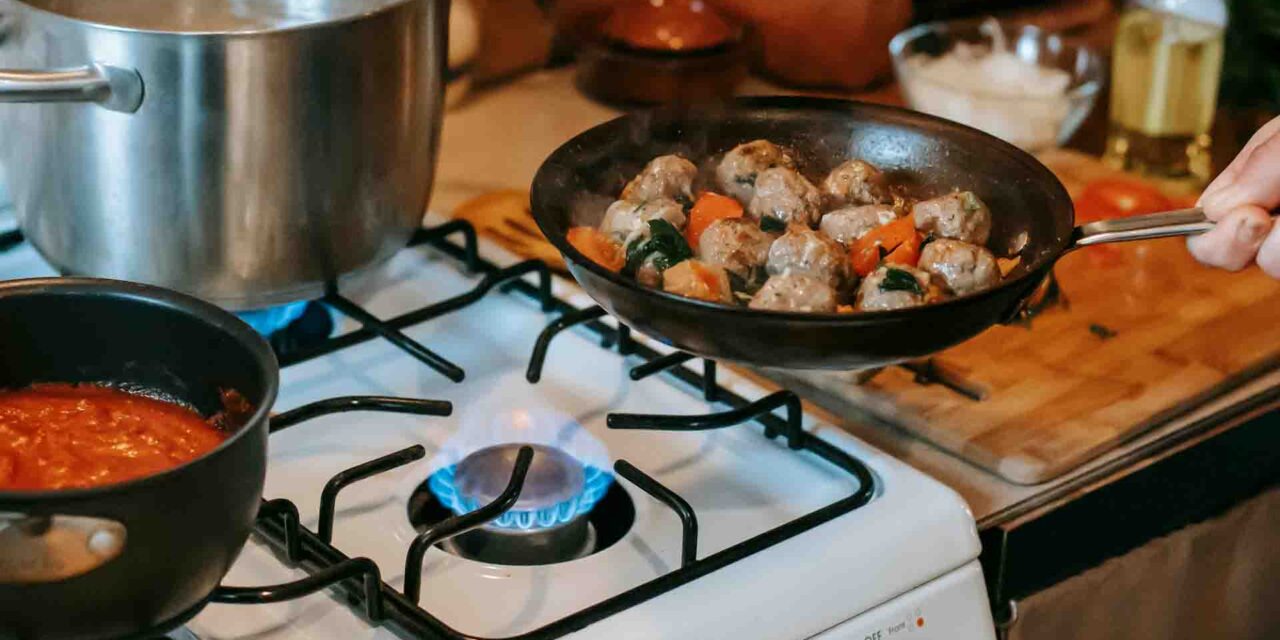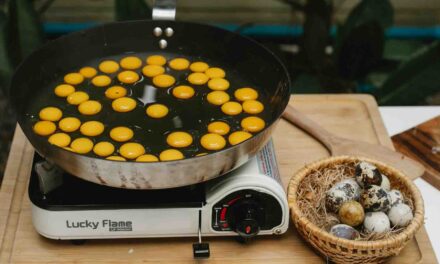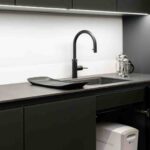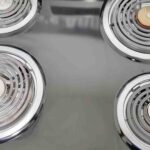As an Amazon Associate, I earn from qualifying purchases.
If you’re looking to upgrade your cookware for your gas stove, it’s important to consider the type of pans that will work best with this type of heat source. Gas stoves can heat up quickly and distribute heat more evenly than electric stoves, so you’ll want to choose pans that can handle high heat and provide even cooking. Cast iron, stainless steel, and copper pans are all great options for gas stoves, as they are durable and conduct heat well. Non-stick pans can also work, but be sure to choose ones that are specifically designed for high-heat cooking. By selecting the right type of pans for your gas stove, you can ensure that your cooking experience is efficient and enjoyable.
Cast Iron:
Cast iron cookware is a staple in many kitchens because of its durability and heat retention properties. The material can evenly distribute heat and maintain consistent temperatures, making it ideal for cooking methods like searing, frying, and baking.
Additionally, when properly seasoned, cast iron develops a natural non-stick surface, which makes it easy to clean and maintain. Its versatility and long-lasting durability make it a popular choice for home cooks and professional chefs alike.
Whether you’re cooking on the stove, in the oven, or over a campfire, cast iron cookware can handle the heat and deliver delicious results.
Stainless Steel:
Stainless steel is a popular choice for many different applications due to its versatility and ease of maintenance. It is highly durable and resistant to corrosion, making it ideal for use in kitchen appliances, industrial equipment, and even medical instruments. One of the main benefits of stainless steel is its ease of cleaning.
You can clean it easily by using a damp cloth or mild soap and water. This makes it a popular choice for environments where hygiene is important, such as hospitals, restaurants, and food processing facilities.
With proper care, stainless steel can maintain its luster and appearance for many years, making it a cost-effective and long-lasting option for both commercial and residential use.
Carbon Steel:
Carbon steel is a versatile and durable material that is often used in the construction of cookware. It is known for its lightweight nature, which makes it easy to handle and maneuver in the kitchen.
In addition, carbon steel has the ability to heat up quickly, allowing for efficient and even cooking. This makes it an ideal choice for tasks that require high heat, such as searing or stir-frying. Its quick heating properties also make it a favorite among professional chefs who need to cook large quantities of food in a short amount of time.
Overall, carbon steel cookware is a popular choice for those who want a reliable and efficient cooking experience.
Copper:
Copper is known for its excellent heat conductivity, making it an important material in various industries. Its ability to quickly and evenly distribute heat makes it a valuable material in electrical wiring, plumbing, and cooking utensils. This means that it is very efficient at transferring heat from one place to another. As a result, copper is widely used in applications where heat conductivity is important. Its ability to quickly and evenly distribute heat makes it a valuable material in many industries. Whether it’s for transferring heat in electrical systems or even cooking in the kitchen, copper’s heat conductivity makes it an essential material in everyday life.
Anodized Aluminum: Nonstick and scratch-resistant.
Anodized aluminum is a type of aluminum that has been specially treated through an electrochemical process to create a nonstick and scratch-resistant surface. During the anodization process, the surface of the aluminum is transformed, creating a layer that is harder and more durable. This makes anodized aluminum ideal for use in cookware, bakeware, and other household items. The nonstick and scratch-resistant properties of anodized aluminum make it easier to clean and maintain, as it is less likely to chip, scratch, or peel. Additionally, the anodization process also makes the aluminum more resistant to corrosion and wear and tear, ensuring that the products made from anodized aluminum last longer and perform better. Overall, anodized aluminum offers a number of benefits for both consumers and manufacturers, making it a popular choice for high-quality, long-lasting products.
Enameled Cast Iron:
Enameled cast iron cookware is a popular choice for many home cooks because of its easy-to-clean features and even heating. The enamel coating makes the cookware non-stick, so food easily releases and cleans up with just soap and water. This makes it a convenient option for those looking for low-maintenance cookware. Additionally, the cast iron material distributes heat evenly, making it ideal for cooking a wide variety of dishes from stovetop to oven. It can be used on any stovetop, including induction, and can even be used in the oven for baking and roasting. The enamel coating also comes in a variety of colors, adding a stylish and vibrant touch to your kitchen. Overall, enameled cast iron cookware is a durable and versatile option for any home cook looking for reliable and practical cookware.
Ceramic:
Ceramic cookware is an excellent choice for anyone who loves to cook. It is non-reactive, meaning it won’t interact with acidic foods and change their flavor. This is a great feature for those who enjoy cooking with tomatoes, vinegar, or citrus fruits. Additionally, ceramic cookware is great for low-heat cooking as it distributes heat evenly and retains it well. This makes it perfect for simmering soups and stews, or slow-cooking dishes. It’s also a good choice for those who prefer to cook with less oil, as it has a non-stick surface that makes it easy to cook with minimal oil. Another benefit of ceramic cookware is that it is easy to clean and comes in a variety of colors and designs to complement any kitchen. Overall, ceramic cookware is a versatile and practical option for anyone who loves to cook.
Nonstick:
Nonstick cookware is a popular choice for cooking delicate foods such as fish, eggs, and pancakes. The nonstick surface allows these foods to cook evenly without sticking to the pan and breaking apart. This makes it easier to cook and flip them without worrying about them falling apart. Additionally, nonstick cookware requires less oil or butter, promoting healthier cooking and reducing the amount of fat in your meals. It also makes cleanup easier, as food residue is less likely to stick to the pan. Overall, nonstick cookware is an ideal option for those who enjoy cooking delicate foods with ease.
Tri-Ply:
Tri-ply cookware is a great option for anyone who loves cooking. The three layers of metal, typically stainless steel or aluminum, are bonded together to create a durable and efficient cooking surface. The even heat distribution provided by tri-ply cookware ensures that your food will cook evenly and consistently, without any hot spots or uneven cooking. This type of cookware is also known for its durability and resistance to warping or denting, making it a great investment for anyone who loves to cook. Many professional chefs and home cooks alike prefer tri-ply cookware for its performance and longevity, making it a popular choice in the kitchen.
Induction-Compatible:
Induction cookware is a great option for those who have induction cooktops in their kitchens. These types of cookware are designed to work with the electromagnetic energy used in induction cooktops. The key difference between regular cookware and induction-compatible cookware is the presence of a magnetic base, which allows the cookware to transfer the heat and cook the food evenly and efficiently. It’s important to use the right cookware with your induction cooktop to ensure that your food cooks properly and efficiently. Look for cookware that is labeled as “induction-compatible” or that has a symbol indicating it can be used with induction cooktops to make sure you are using the right cookware for your cooking needs.
FAQ
What type of pans are best for a gas stove?
The best type of pans for a gas stove are those with a heavy and flat bottom, such as cast iron, stainless steel, or copper. These materials distribute heat evenly and are able to withstand the high temperatures of a gas flame.
Can I use non-stick pans on a gas stove?
Yes, you can use non-stick pans on a gas stove, but it’s important to choose ones that are specifically labeled as safe for use on gas stoves. Non-stick pans with a flat and heavy bottom will work best on a gas stove.
Are there any pans I should avoid using on a gas stove?
Pans with thin or warped bottoms, such as aluminum or glass pans, may not perform as well on a gas stove. It’s best to avoid using these types of pans as they may not distribute heat evenly and can even warp under high heat.
How do I know if a pan is suitable for a gas stove?
Look for pans with a heavy and flat bottom, as well as those that are labeled as safe for use on gas stoves. It’s also a good idea to check the manufacturer’s recommendations for the specific type of stove you have.
Can I use ceramic or glass pans on a gas stove?
Ceramic and glass pans can be used on a gas stove, but it’s important to ensure that they are specifically designed for use on gas stoves and have a heavy and flat bottom to ensure even heat distribution.
What size pans work best on a gas stove?
Pans that are slightly larger than the burner size on your gas stove work best, as they allow for better heat distribution and prevent hot spots. However, it’s important to avoid pans that are too large and extend beyond the burner, as this can lead to uneven heating.
Are there any specific maintenance tips for pans used on a gas stove?
It’s important to regularly clean and maintain your pans, especially if they are used on a gas stove. Avoid using high heat for prolonged periods, as this can damage the pan. Additionally, always allow the pan to cool down before cleaning it to prevent warping or damage.
As an Amazon Associate, I earn from qualifying purchases.










